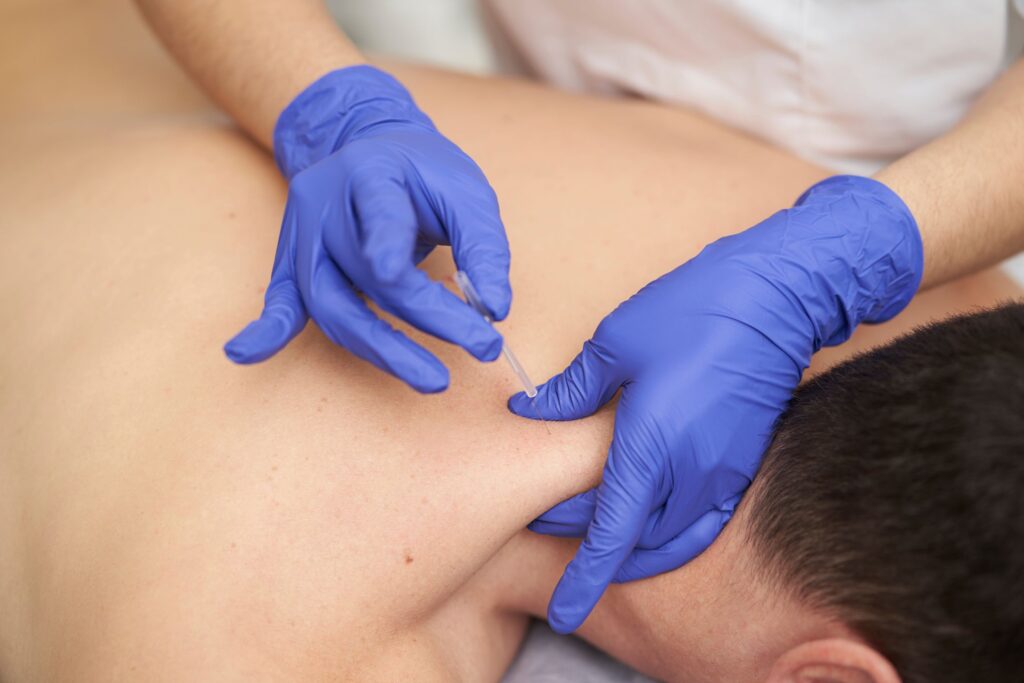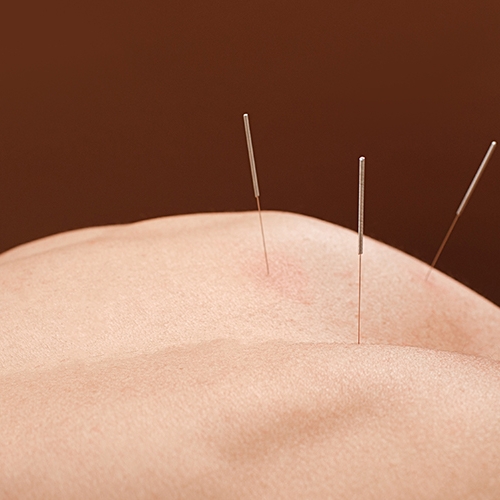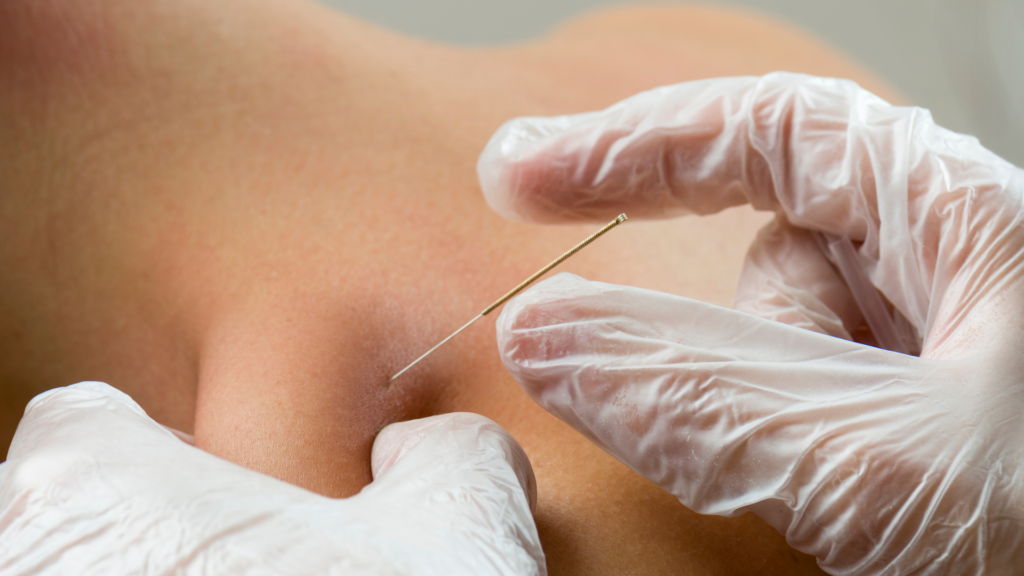What Is Intramuscular Stimulation (IMS) and How Does It Work?

Are you curious about intramuscular stimulation (IMS)? This technique uses thin needles to treat muscle pain and tension. People often seek IMS to relieve conditions like back pain, headaches, or sports injuries. IMS works by targeting trigger points, releasing tension, and improving muscle function.
Your muscles can develop tight knots called trigger points. These knots can cause pain and limit movement. During IMS, a trained therapist inserts needles into these points to help reduce pain. This process encourages muscles to relax and promotes healing.
Many find IMS effective for various pain-related issues. A session might involve feeling a click or twitch when the needle hits the target area. While it might sound intense, many consider it less painful than it seems. Wouldn’t you like to relieve that stubborn muscle pain with this innovative method?

Curious if IMS could be the solution for your pain? At Lake Country Physiotherapy in Orillia, our therapist roster includes practitioners who specialize in Intramuscular Stimulation to target and relieve chronic muscle tension and pain.
Book your appointment today and take the first step toward lasting relief and improved mobility!
Fundamentals of Intramuscular Stimulation (IMS)
Intramuscular Stimulation (IMS) is a technique used to relieve pain and improve muscle function. It involves understanding its purpose, history, and how it affects your body.
Definition and Purpose
Intramuscular Stimulation (IMS) is a treatment that uses fine needles to target tight muscles. These muscles can cause pain and discomfort. The aim of IMS is to relax these muscles and reduce pain. This method is often used for conditions like chronic pain and muscle tension.
IMS works by inserting needles into specific muscle points. These points are called trigger points. Once the needle is inserted, it helps to release tension in the muscle. Over time, this can lead to improved movement and pain relief.
Historical Development
IMS was developed by Dr. Chan Gunn in the 1970s. He created this method to treat chronic pain. Since then, IMS has gained recognition worldwide. It is now a common treatment in physiotherapy clinics.
The idea behind IMS comes from traditional acupuncture. However, IMS focuses specifically on muscle knots. Over the years, research has shown that IMS can be an effective treatment for many people. Its development has helped countless individuals find relief from muscle pain.
Physiological Basis of IMS
The physiological basis of IMS is centered on how needles affect your muscles. When a needle is inserted into a tight muscle, it can stimulate the muscle to relax. This process involves a few key steps.
First, inserting the needle affects the nerves within the muscle. This can help reset the nerve signals. As a result, the muscle may relax. Second, the needle can improve blood flow to the area. Better circulation can help reduce pain and stiffness.
Additionally, IMS can promote the body’s natural healing processes. It encourages the muscles to repair themselves. This combination of effects makes IMS a powerful tool for addressing muscle-related issues.
IMS Technique and Application
Intramuscular Stimulation (IMS) involves careful preparation, skilled needle insertion, and important post-treatment care. The technique aims to relieve pain by targeting tight muscle bands. Proper application ensures effectiveness and patient comfort.

Preparation and Patient Assessment
Before starting IMS, thorough assessment is crucial. You will discuss symptoms with your healthcare provider. This helps identify specific areas that need treatment.
During this stage, your medical history is reviewed to ensure IMS is suitable for you. Your provider might also perform physical exams to pinpoint tight muscles or trigger points that need attention.
Cleanliness is prioritized. The treatment area is swabbed with rubbing alcohol and sterile acupuncture needles are utilized.
Needle Insertion and Stimulation
Once preparation is complete, the therapist uses thin acupuncture needles designed to not cause much pain. They are inserted into tight muscle bands known as trigger points.
You might feel a sensation called a “twitch response” when the needle hits a trigger point. This is expected and can help relieve tension. The needle often causes a mild ache or cramping, signaling the muscle is responding to the treatment.
The therapist may manipulate the needle to maximize effect. This technique relaxes the muscle, improving flexibility and reducing pain.
Post-Treatment Practices
After IMS, some soreness is common. It might feel like you had a deep massage or a good workout. To help your recovery, gentle stretching and staying active can be beneficial.
Your provider may suggest using heat or ice packs to soothe any discomfort. Drinking water also helps flush out toxins released during the treatment.
Follow-up appointments might be scheduled to monitor your progress. It’s important to report any unusual pain or side effects to your healthcare provider after the session.
Conclusion
Intramuscular Stimulation (IMS) can be a helpful approach for dealing with muscle pain and tension. It involves using small needles to relieve pressure on tight muscles, aiming to improve movement and reduce discomfort.
You might consider IMS if you experience chronic pain that has not responded to other treatments. It’s important to consult a healthcare professional to determine if it’s suitable for you.
Whether you are an athlete, a worker with repetitive strain injuries, or someone dealing with unidentified pain, IMS offers a potential solution.For an IMS session, visit us at Lake Country Physiotherapy in Orillia, ON. Our skilled therapists are ready to support your health and wellness journey.
